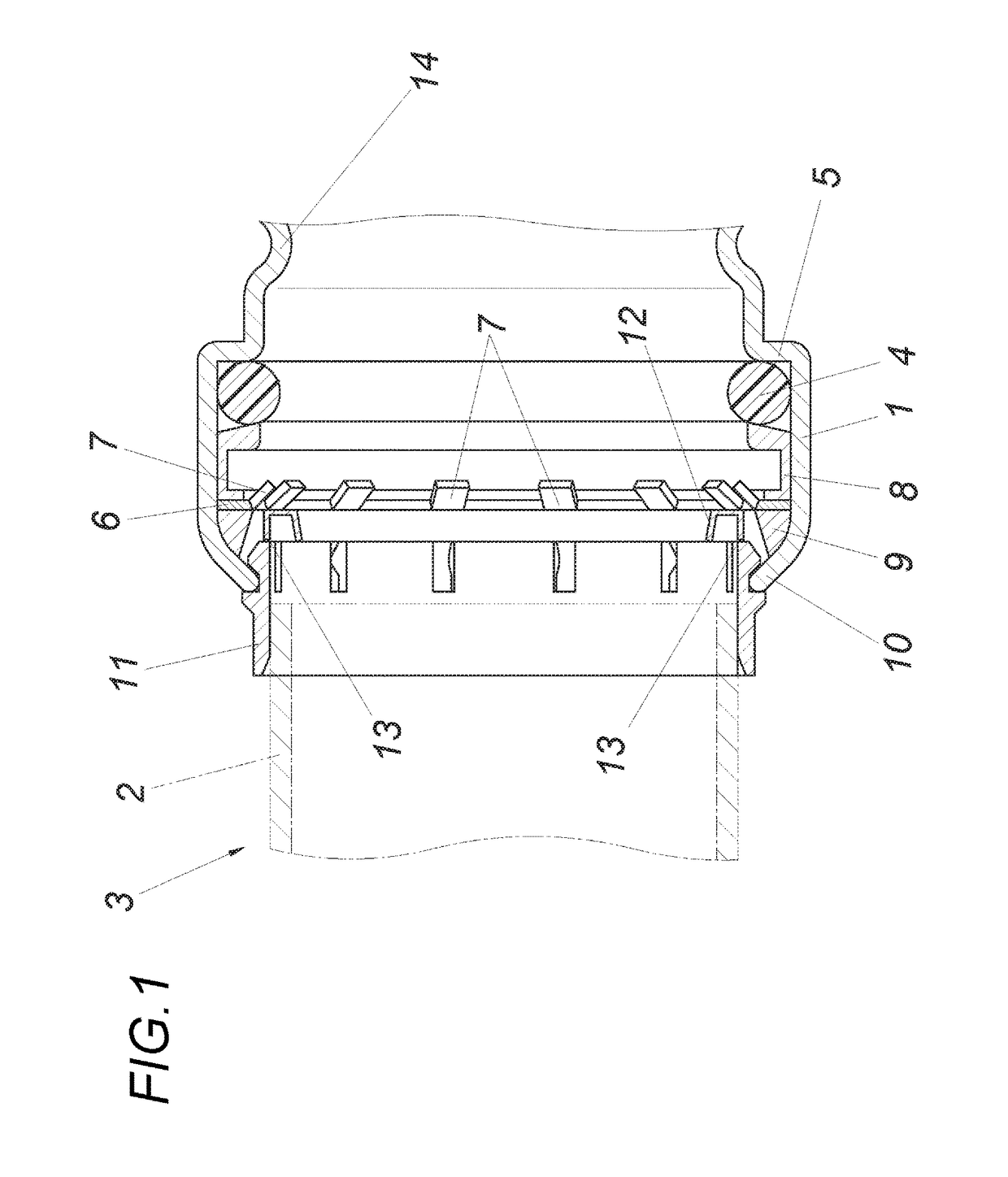Plug-in coupling for a pipe, in particular for water conduits
a plug-in coupling and water conduit technology, which is applied in the direction of couplings, pipes/joints/fittings, mechanical devices, etc., can solve the problems of significant increase in construction effort, damage to the sealing ring downstream of the locking ring, and difficulty in respect of the available space for the arrangement of the protective ring in the plug-in coupling. , to achieve the effect of minimising the required space, facilitating handling and reducing construction complexity
- Summary
- Abstract
- Description
- Claims
- Application Information
AI Technical Summary
Benefits of technology
Problems solved by technology
Method used
Image
Examples
Embodiment Construction
[0017]The plug-in coupling in accordance with the embodiment according to FIGS. 1 and 2 comprises a coupling sleeve 1, into which the pipe end 2 of a pipe to be connected can be inserted. The sealing between the coupling sleeve 1 and the outer jacket of the pipe end 2 occurs by way of a sealing ring 4 which rests on a shoulder 5 of the coupling sleeve 1 in the plug-in direction. The pipe end 2 inserted into the coupling sleeve 1 is axially retained against extraction from the coupling sleeve 1 by means of a locking ring 6 upstream of the sealing ring 4. The locking ring 6 comprises retaining claws 7 for this purpose, which extend in an inclined fashion in the plug-in direction and rest resiliently with their sharp-edged face ends on the outer jacket of the pipe end 2, so that the retaining claws 7 axially retain the pipe end 2 under automatic interlocking when an attempt is made to pull the pipe end 2 from the coupling sleeve 1. The axial support of the locking ring 6 occurs by way ...
PUM
 Login to View More
Login to View More Abstract
Description
Claims
Application Information
 Login to View More
Login to View More - R&D
- Intellectual Property
- Life Sciences
- Materials
- Tech Scout
- Unparalleled Data Quality
- Higher Quality Content
- 60% Fewer Hallucinations
Browse by: Latest US Patents, China's latest patents, Technical Efficacy Thesaurus, Application Domain, Technology Topic, Popular Technical Reports.
© 2025 PatSnap. All rights reserved.Legal|Privacy policy|Modern Slavery Act Transparency Statement|Sitemap|About US| Contact US: help@patsnap.com



